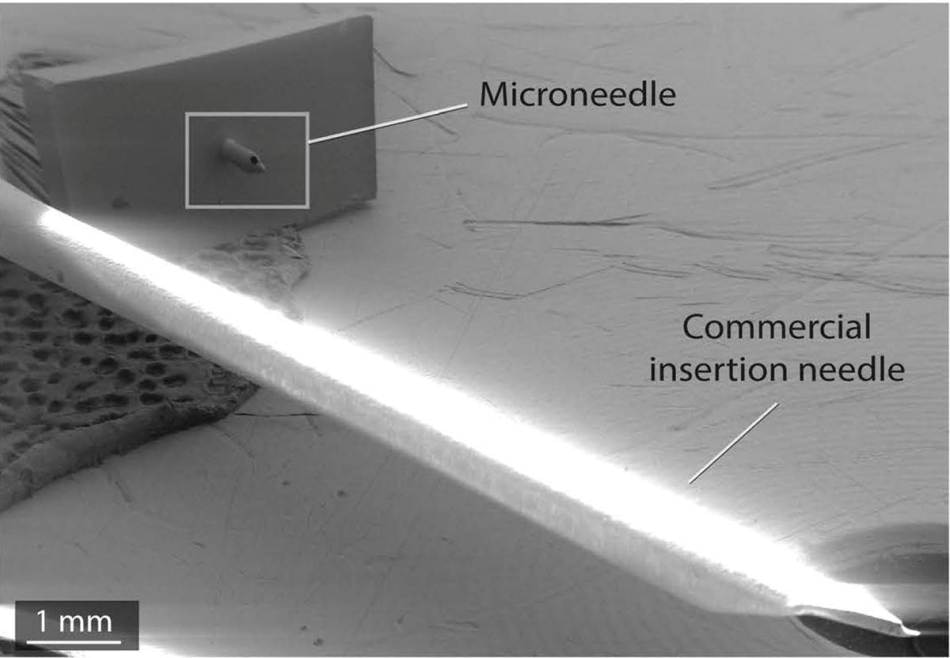Jan 4 2019
Scientists in Sweden are designing a more comfortable and reliable blood-sugar monitoring system for people with diabetes. After fruitfully testing a prototype of a microneedle patch on a human subject, the completion of a system for clinical tests is currently in progress.
 The microneedle is significantly smaller than the commercial standard for continuous glucose monitoring. (Image: Courtesy of KTH)
The microneedle is significantly smaller than the commercial standard for continuous glucose monitoring. (Image: Courtesy of KTH)
Continuous monitoring is a way to reliably and safely lower blood glucose—offering the user a complete picture of their glucose levels throughout the day and helping them prevent severe hypoglycemia. But the continuous glucose monitoring systems (referred to as CGMS) in use currently have two key disadvantages: they are uncomfortable, since they require a minimum 7 mm needle that is inserted into the skin; and, due to their size, they take measurements in the fat tissue, which is not the most suitable location.
Scientists at KTH Royal Institute of Technology in Stockholm have designed a promising alternative: a microneedle patch that is 50 times smaller than the needles employed in present-day CGM systems. The combination of the patch and an extremely miniaturized three-electrode enzymatic sensor was demonstrated in a recent study to be capable of accurately and dynamically monitoring blood glucose levels over time, with a delay of approximately 10 minutes, when applied to a human subject’s forearm.
One of the scientists, doctoral student Federico Ribet, says the following steps are to create a transferable adhesive patch, together with algorithms and embedded electronics for a fully-realized system to take to clinical trial.
Our solution is painless to the user. We measure directly in the skin, and there are no nerve receptors that detect pain—just a fine mesh of very tiny blood vessels.
Federico Ribet, Doctoral Student, KTH Royal Institute of Technology
Within the dermis, natural capillary action fills up the hollow microneedles with interstitial fluid (the liquid surrounding the cells in the skin). From the blood capillaries in this fluid, nutrients like sugar diffuse out to reach the cells.
An important distinction is that unlike commercially available CGMS which measure the subcutaneous fat tissue, ours measures within the skin less than 1 mm deep, where the interstitial fluid follows closer and more homogeneously the blood-glucose oscillations.
Federico Ribet, Doctoral Student, KTH Royal Institute of Technology
This would offer a substitute to pricking one’s fingers numerous times daily to take a blood test, although a user would still intermittently have to do so—as they do with commercial CGMS—so as to recalibrate the sensor and obtain the most accurate and instantaneous readings.
However, with this new system, that could soon change. Ribet highlights that the most advanced CGM device currently on the market is factory-calibrated and decreases the frequency of having to do a finger blood test. He says the study team at KTH believes it could, in due course, match, or even exceed this level of quality.